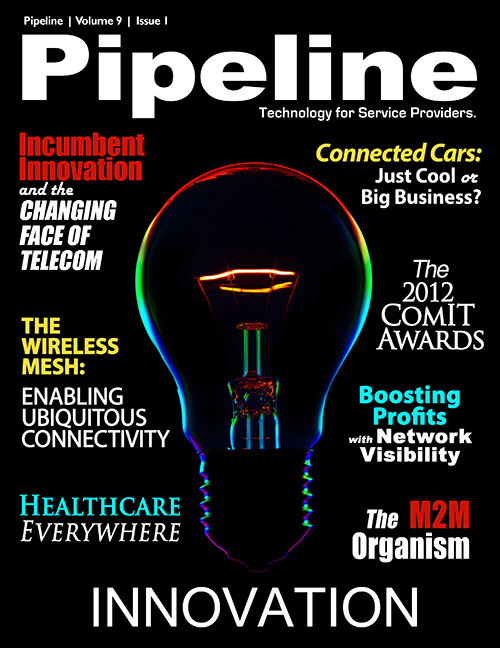Incumbent Innovation: Changing the Face of Telecom
Building the Future
The thing that sets these major incumbent labs apart from some of the other research being done in the industry is the size involved and the number of patents that result. AT&T, for example, maintains some 1,800 staffers in its Labs division in a number of regional offices.
BT, meanwhile, enjoys a current patent portfolio in excess of 5,000 (though Whitely notes that the number filed in the century and a half since the company’s founding is many times more than that). T-Labs, meanwhile, applied for 244 patents in 2011 alone, and owns more than 7,500 property rights.
Some of these patents are a part of a path toward what many see as the strategic future of these companies. The T-Labs, for instance, have invested a great deal of time and energy on next-generation handsets. ‚ÄúWe are aware of new trends very early,‚ÄĚ said Arnold, noting that T-Labs have been on the leading edge of the open mobile internet movement. ‚ÄúWe became a member of the open handset alliance at an early stage and offered the first Google phone in Germany.‚ÄĚ
But the work being done at these innovation labs aren’t just proving that major carriers can be on par with other firms and service providers. Rather, these labs seek to leverage the unique combination of consumer trust, financial wherewithal, and technological acumen their companies possess to change the way that they do business. As old service business lines erode, here are a few projects that incumbent innovation labs are exploring as the new way forward for telecom giants.
Securing Handsets
Security is a major concern for every subscriber, and is a special consideration for subscribers who regularly deal with sensitive or confidential information. While handset manufacturers have made strides towards producing secure devices, carriers like Deutsche Telekom understand that there are still weak points that the carrier is best-equipped to address. ‚ÄúT-Labs have contributed massive knowledge in the development of a very secure mobile handset which will be used by governments and within high confidential areas,‚ÄĚ said Arnold. DT has been hard at work on microkernel technology, which secures the typically monolithic kernels found in most mobile operating systems, which prove to be a common Achilles‚Äô heel among handsets.
Need for Speed
BT, meanwhile, is engaged in research on advanced fiber optics, fast copper, and wireless which unite to spread its Superfast Broadband coverage to every home in Great Britain. In addition, BT is engaged in projects on so-called ‚Äėbig data‚Äô: ‚Äúthe huge amounts of raw data being generated by technology and the web,‚ÄĚ said Whitely, ‚Äúits advanced software algorithms, visual analytics and making this useable.‚ÄĚ
Healthy Networks, Healthy People
Telehealth and telemedicine are also major goals for many of the incumbent labs. Since patients are not always close to the help they need at the time when they need it, carriers are developing ways to allow interaction between doctor and patient even when they are thousands of miles apart. Since these interactions need secure, reliable connections to make them happen, a number of incumbent providers have taken on this as a central part of their innovation research. AT&T’s work on telehealth, for example, aims to not only transform the role of AT&T and telecom, more broadly, but looks to transform the entire healthcare industry by making it possible to collect reliable, high-quality medical data at any time from any location.
Verizon Wireless, likewise, has made telehealth a part of its innovation strategy, undertaking projects with partners like BL Healthcare to develop applications that leverage the bandwidth delivered by VZW’s network to enable remote health management solutions that can bring doctors to patients in high definition.


















